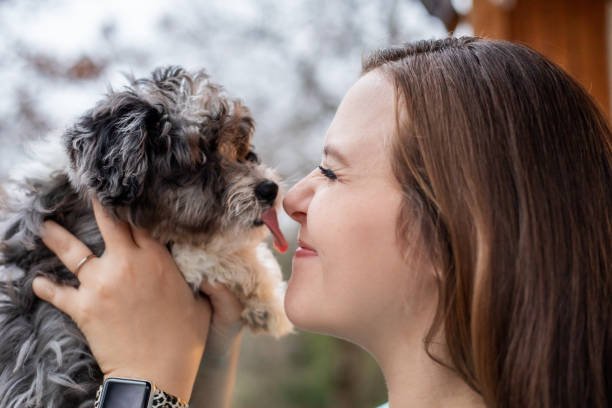The Ultimate Guide to Mini Goldendoodle Puppies
Mini Goldendoodles have surged in popularity as one of the most sought-after hybrid breeds, combining the intelligence of a Poodle with the affectionate nature of a Golden Retriever. Whether you’re a first-time dog owner or a seasoned pet parent, this guide dives deep into every aspect of raising a Mini Goldendoodle puppy, from understanding their unique genetics to mastering their care routine.
What Is a Mini Goldendoodle?
A Mini Goldendoodle is a cross between a Golden Retriever and a Miniature Poodle, bred to create a smaller, hypoallergenic companion. These dogs typically weigh 15–35 pounds and stand 13–20 inches tall, making them ideal for apartments and families alike. Their coats range from wavy to curly, often inheriting the Poodle’s low-shedding traits, which reduce allergens in the home.
Understanding Mini Goldendoodle Generations
The genetic makeup of a Mini Goldendoodle significantly impacts their coat type, size, and hypoallergenic qualities. Here’s a breakdown of common generations:
1. F1 Mini Goldendoodle (50% Poodle, 50% Golden Retriever)
- Coat: Mix of straight, wavy, or curly.
- Hypoallergenic: Less predictable; may shed moderately.
- Traits: Benefits from hybrid vigor, reducing inherited health issues.
2. F1B Mini Goldendoodle (75% Poodle, 25% Golden Retriever)
- Coat: Curly or wavy, highly hypoallergenic.
- Best For: Allergy sufferers due to minimal shedding.
3. F1BB/F2B Mini Goldendoodle (87.5%+ Poodle)
- Coat: Tight curls, almost non-shedding.
- Grooming Needs: High—daily brushing and professional grooming every 6–8 weeks.
4. Multi-Generation (F3+)
- Traits: Predictable coat and temperament from repeated Poodle crosses.
- Ideal For: Families prioritizing consistency in hypoallergenic traits.

Mini Goldendoodle Size Chart
Mini Goldendoodles vary in size based on their parentage. Below is a general guide:
| Category | Weight | Height |
|---|---|---|
| Teacup | <15 lbs | <10 inches |
| Toy | 15–20 lbs | 10–14 inches |
| Mini | 20–35 lbs | 14–20 inches |
Note: Full size is typically reached by 12–18 months.
Temperament and Personality
- Friendly and Social: Thrives in families, loves children, and gets along with other pets.
- Intelligent: Rank among the most trainable breeds, excelling in obedience and agility.
- Energetic but Adaptable: Requires 30–60 minutes of daily exercise but can adapt to apartment living.
Pro Tip: Early socialization prevents separation anxiety, a common issue due to their people-oriented nature.
Caring for Your Mini Goldendoodle Puppy
1. Nutrition
- Puppy Food: High-quality kibble with real meat as the first ingredient. Avoid corn or soy.
- Feeding Schedule: 3–4 meals daily until 6 months, then transition to twice daily.
2. Grooming Essentials
- Brushing: 3–4 times weekly to prevent mats; use a slicker brush for curly coats.
- Bathing: Every 4–6 weeks with hypoallergenic shampoo.
- Ears and Nails: Clean ears weekly and trim nails monthly to prevent infections.
3. Exercise Needs
- Daily Activity: Walks, fetch, or puzzle toys to stimulate their minds.
- Mental Enrichment: Training sessions or interactive games to curb boredom.
Health and Lifespan
Mini Goldendoodles are generally healthy but prone to:
- Hip Dysplasia: Common in both parent breeds; maintain a healthy weight.
- Allergies: Food or environmental; opt for limited-ingredient diets if symptoms arise.
- Ear Infections: Due to floppy ears; regular cleaning is critical.
Average Lifespan: 10–15 years with proper care.
Training Tips for Success
- Start Early: Begin potty training and basic commands like “sit” and “stay” at 8–12 weeks.
- Positive Reinforcement: Use treats and praise to reinforce good behavior.
- Crate Training: Reduces anxiety and aids in housebreaking.
Common Challenge: Nipping and chewing—redirect to toys and use bitter sprays on furniture.

Choosing a Reputable Breeder
- Health Testing: Ensure parents are screened for hip dysplasia, eye issues, and heart conditions.
- Ask Questions: Inquire about socialization practices and genetic history.
- Avoid Red Flags: Puppy mills often skip health checks; prioritize breeders with transparency.
Cost of Ownership
| Expense | Average Cost |
|---|---|
| Initial Purchase | $1,500–$5,000 |
| Annual Food | $300–$600 |
| Grooming | $600–$1,200/year |
| Veterinary Care | $500–$1,000/year |
Tip: Pet insurance (e.g., Healthy Paws) can offset unexpected medical costs.
Why a Mini Goldendoodle Could Be Your Perfect Match
- Hypoallergenic: Ideal for allergy sufferers (especially F1B and F1BB generations).
- Versatile: Adapts to city or suburban living, active or relaxed lifestyles.
- Family-Friendly: Gentle with kids and eager to please.
1. Why Mini Goldendoodles Are Perfect for First-Time Dog Owners
If you’re considering bringing a dog into your life for the first time, a Mini Goldendoodle might just be the ideal choice. These charming hybrids are known for their friendly demeanor, intelligence, and adaptability, making them a great fit for novice pet parents.
One of the standout traits of Mini Goldendoodles is their ease of training. Thanks to their Poodle lineage, they are quick learners and eager to please. Whether you’re teaching basic commands like “sit” and “stay” or more advanced tricks, their intelligence ensures a smooth training process. This is especially beneficial for first-time owners who may feel overwhelmed by the idea of training a dog.
Another reason Mini Goldendoodles are perfect for beginners is their adaptability. Whether you live in a small apartment or a spacious home, these dogs can thrive in various environments. They require moderate exercise—around 30–60 minutes of daily activity—but are equally content with indoor playtime. This flexibility makes them suitable for both active individuals and those with a more laid-back lifestyle.
Additionally, Mini Goldendoodles are family-friendly. They get along well with children, other pets, and even strangers, making them a versatile addition to any household. Their affectionate nature ensures they’ll quickly become a beloved member of your family.
For first-time owners concerned about grooming, Mini Goldendoodles are relatively low-maintenance compared to other breeds. While their coats require regular brushing to prevent mats, their hypoallergenic qualities make them a practical choice for those with allergies.
In summary, Mini Goldendoodles are the perfect blend of intelligence, adaptability, and affection, making them an excellent choice for first-time dog owners.

The Best Diet for Mini Goldendoodle Puppies: Nutrition Tips for Optimal Health
Feeding your Mini Goldendoodle puppy a balanced and nutritious diet is crucial for their growth and overall well-being. As a hybrid breed, Mini Goldendoodles have specific dietary needs that must be met to ensure they thrive.
When selecting food for your Mini Goldendoodle, opt for high-quality puppy kibble that lists real meat (e.g., chicken, lamb, or salmon) as the first ingredient. Avoid foods with fillers like corn, soy, or artificial preservatives, as these can lead to allergies or digestive issues.
Protein is essential for muscle development, so aim for a diet that contains 20–30% protein. Healthy fats, such as omega-3 and omega-6 fatty acids, are also important for maintaining a shiny coat and supporting brain development. Look for ingredients like fish oil or flaxseed in your puppy’s food.
Mini Goldendoodles are prone to food allergies, so it’s important to monitor their reactions to new foods. Common allergens include beef, dairy, and wheat. If you notice symptoms like itching, redness, or gastrointestinal upset, consider switching to a limited-ingredient diet or consulting your veterinarian.
Portion control is another key aspect of feeding your Mini Goldendoodle. Overfeeding can lead to obesity, which increases the risk of joint problems like hip dysplasia. Follow the feeding guidelines on the food packaging and adjust based on your puppy’s activity level and growth rate.
Finally, don’t forget about hydration. Always provide fresh water, especially after meals or playtime. Proper nutrition sets the foundation for a healthy and happy Mini Goldendoodle, so invest in quality food and consult your vet for personalized recommendations.

Final Thoughts
Mini Goldendoodles are more than just a trendy breed—they’re loyal companions that bring joy, laughter, and endless love into any home. By understanding their needs, prioritizing proper care, and choosing a responsible breeder, you’ll set the stage for a fulfilling lifelong bond.
Ready to embark on this golden adventure? Your Mini Goldendoodle puppy is waiting to steal your heart!
Related Post : Long Hair German Shepherd: Facts and Advantages Explained
Frequently Asked Questions
- What is the difference between F1 and F1B Mini Goldendoodles?
F1B has more Poodle traits and is more hypoallergenic. - Can Mini Goldendoodles be left alone?
They prefer companionship and may develop separation anxiety. - Do Mini Goldendoodles get along with other pets?
Yes, they are generally friendly with other animals. - How often should I feed my Mini Goldendoodle puppy?
3–4 meals daily until 6 months, then twice daily. - What toys are best for Mini Goldendoodles?
Puzzle toys and chew toys to keep them mentally stimulated. - How do I potty train my Mini Goldendoodle?
Use crate training and a consistent schedule. - Are Mini Goldendoodles high-maintenance?
They require regular grooming but are otherwise low-maintenance. - Can Mini Goldendoodles swim?
Yes, many inherit the Poodle’s love for water. - What colors do Mini Goldendoodles come in?
Cream, apricot, red, black, and chocolate. - How do I find a reputable Mini Goldendoodle breeder?
Look for health testing and transparency. - Are Mini Goldendoodles good for allergy sufferers?
Yes, especially F1B and F1BB generations.
